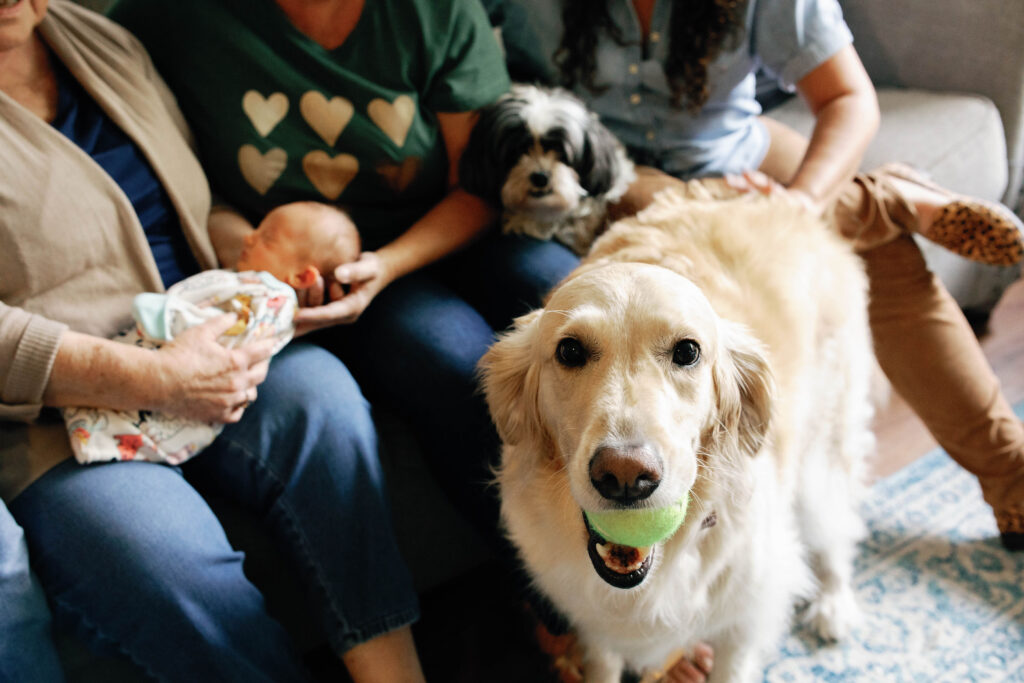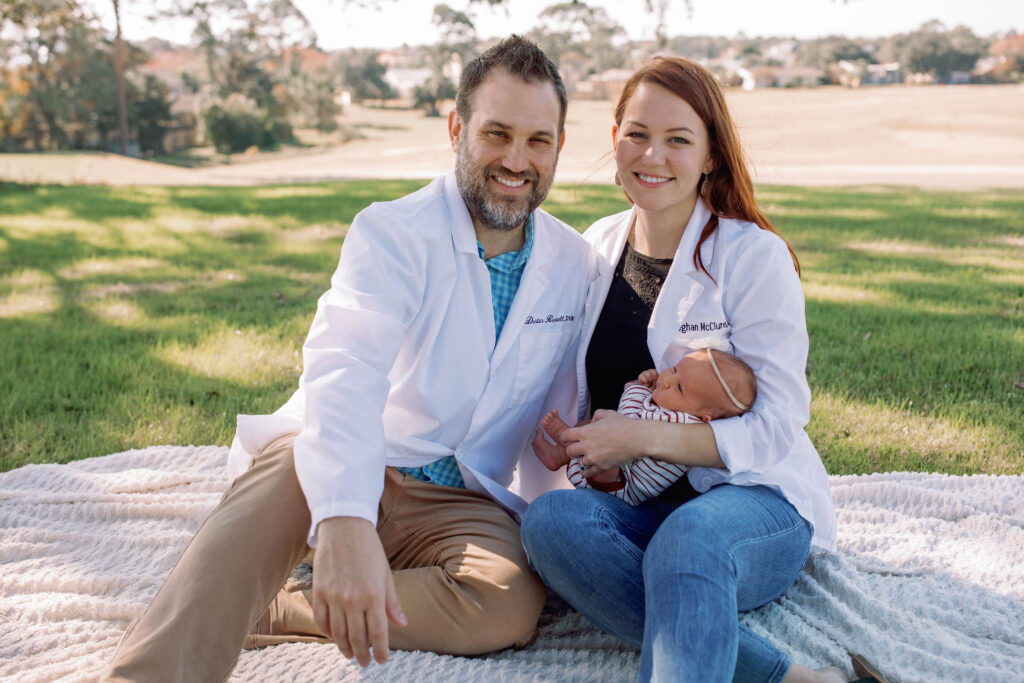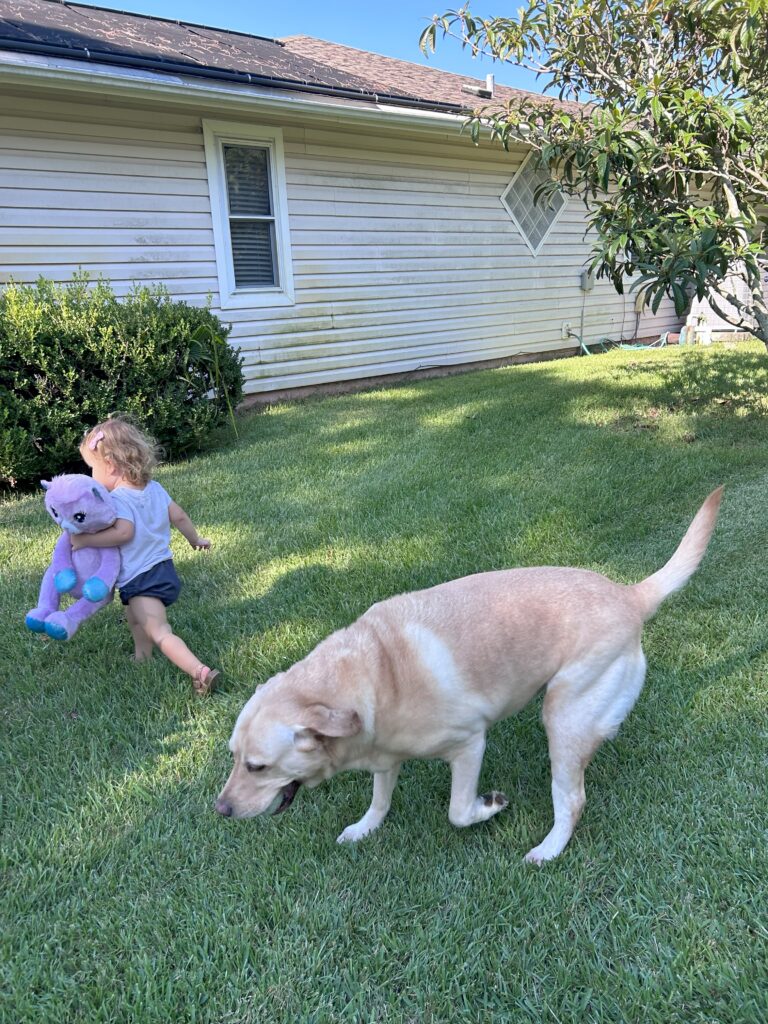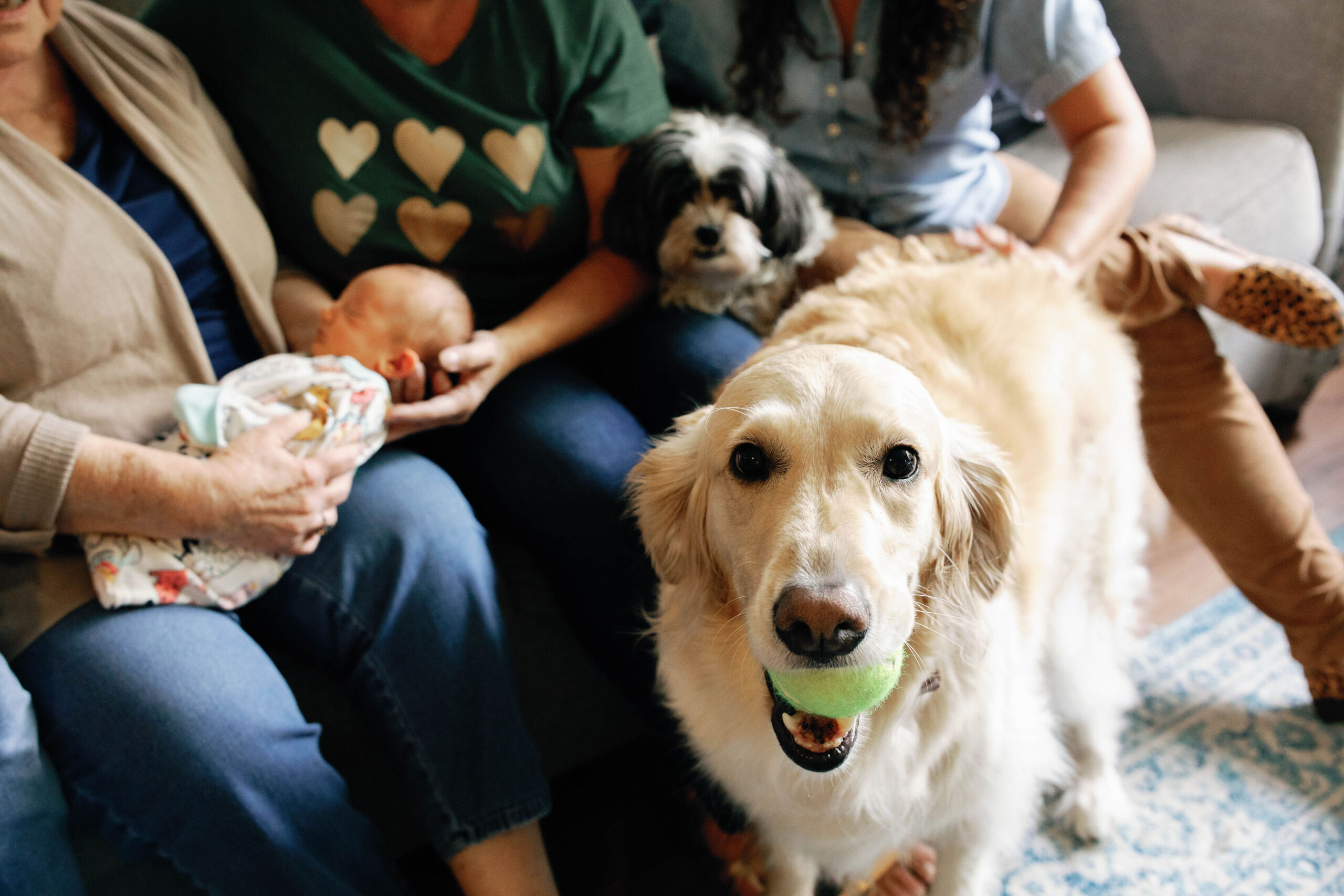As a Pensacola Veterinarian, I got first hand experience with introducing your pets to babies. Our clinic has assisted many clients on their pets behavior issues. This includes separation anxiety, anxiety with vet visits, and even cases of aggression. We’ve also assisted many of our clients with helpful resources when it comes to introducing the new addition of a baby to your pets whom are already a part of the family. I was able to get a first hand experience when my wife and I, Dr. Meghan McClure, welcomed our first born child. Here are a few tips that allowed us to feel a little more at ease when we brought our baby home. We’re hoping you can implement a few of these tips at home if you’re in the same situation.
Introducing Pets to Babies
1. Make sure they are well trained before baby arrives.
Our pets could do no wrong in our eyes before our children came along. In a sense, they were our first “babies” and went along with us pretty much everywhere. We couldn’t see coming all of the things that might not be well tolerated. These behaviors mostly occurred during eating and sleeping. We were running low on sleep and trying to make sure the baby is also sleeping. For instance, barking at the mailman. Before the baby- no problem! But, now that we were trying to keep a newborn asleep after hours of trying, their normal barks weren’t quite as adorable as they once were. We also have dogs who love to jump. It was a greeting from them we welcomed before and even encouraged while playing. But once you have a precious newborn in your arms, it’s not a safe environment to have a dog jumping on you.
If you’re able to see these issues ahead of time, we highly recommend working with a trainer. In Pensacola, we have several well-qualified trainers who can help curb these behaviors of barking, begging, jumping and much more. Feel free to give our office a call if you’d like recommendations.

2. Take it Slow
One of the smartest decisions we made was to board our dogs for the first two days we were home. We knew they were happily playing with their puppy friends while settled in.
When arriving home, we greeted our dogs and cats first without our baby in arms. We didn’t want them to swarm the baby and didn’t want them to be overwhelmed. When we did finally have them meet the baby, we introduced them one pet at a time and did so in the front yard in a neutral territory. This allowed for a calm environment and for us to take things at a slow pace. Your pets are dealing with something completely out of their territory and we don’t want to overwhelm them. As time went on, some of our pets, (Matilda and our cat, Marsha) loved being near our toddler. Our older pets (Venus and Benson) didn’t show as much interest. It’s important to never force a photo, a cute moment, or anything else at the expense of your pet being uncomfortable. This is when most pets tend to lash out and bite, even if they’ve never bitten a human before.

3. Always Supervise, Especially in Infancy
As children get older they tend to get more curious. As veterinarians we know the possible risks of having our children near animals. We never let our children around our pets alone or without supervision. An adult caregiver is always close by. As soon as your children are able to understand, we talked a lot about petting our pets with an open hand (not grabbing their fur) and being very gentle. Still, we can’t trust our pets or toddlers 100% so we are always close by in case something happens.



In short, we can never really be too safe when combining our family members. In order to create a calm and safe environment for both our children and pets, we highly recommend taking the necessary steps to prepare your home and save yourself from future headaches or accidents.
Questions? Give us a call at (850) 455-1349. We’re happy to help!
